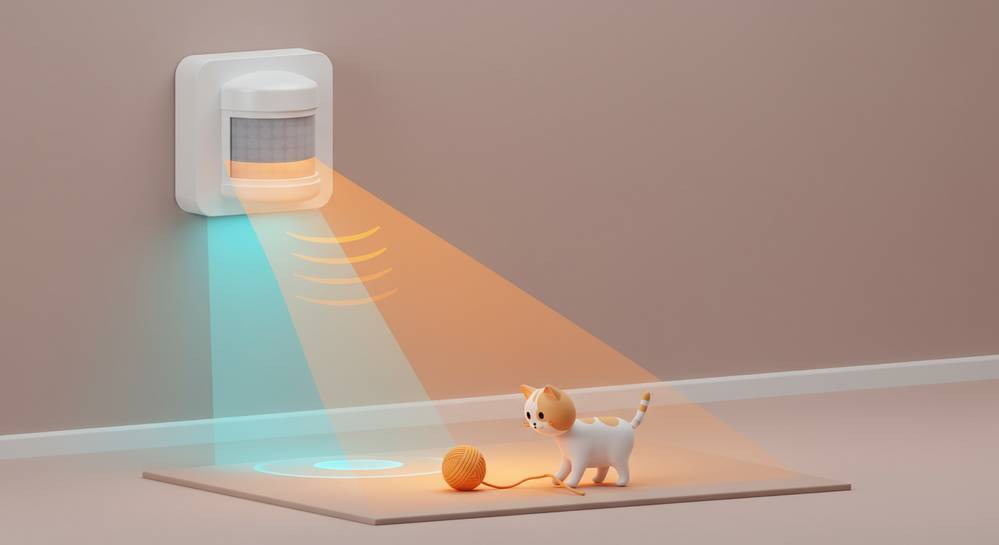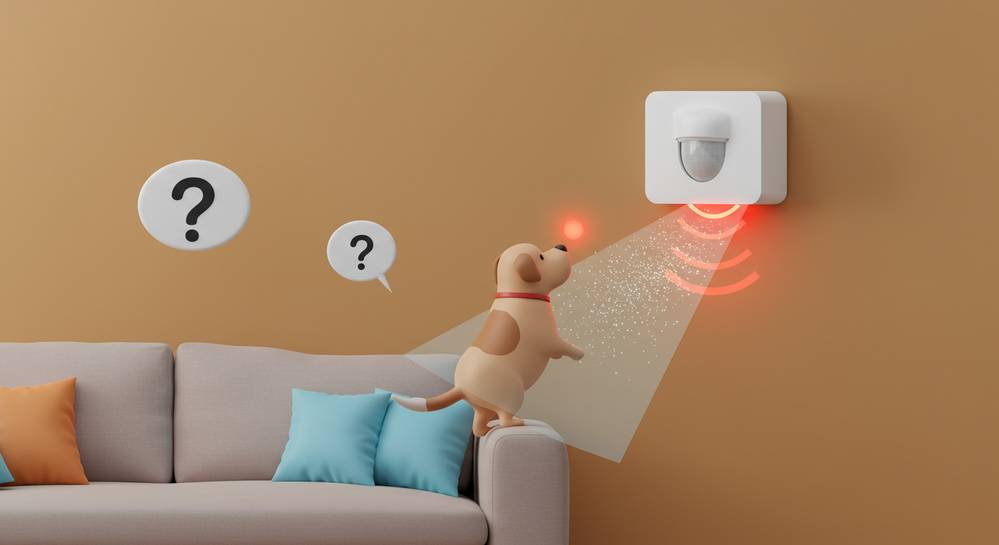A home security system provides peace of mind but constant false alarms from a cat or dog can be a major headache. This is where pet friendly home motion detectors come in. These smart devices are specifically designed to distinguish between human movement and the activity of your pets, ensuring your home stays protected without unnecessary alerts. This guide explores how they work and what to look for.
How do pet friendly motion detectors work

Pet friendly home motion detectors use smart technology to tell the difference between an intruder and your pet. The core component is usually a Passive Infrared (PIR) sensor. These specialized sensors in smart homes work by detecting changes in infrared energy, or heat. A person moving creates a significant thermal disturbance that the sensor easily recognizes, preventing false alarms from your furry companions.
How sensors differentiate pets from people
To achieve pet immunity, manufacturers employ several sophisticated methods. These techniques ensure that only genuine threats trigger an alarm, giving you peace of mind. The most effective systems often combine more than one of these strategies for superior accuracy.
- Weight and Size Thresholds: The most common method involves calibrating the sensor to ignore heat signatures from bodies under a specific weight, such as 40 or 85 pounds. This allows smaller pets to move freely.
- Dual-Technology Sensing: Advanced detectors pair a PIR sensor with a microwave (MW) sensor. An alarm is only triggered when both technologies detect movement simultaneously, a scenario highly unlikely to be caused by a pet.
- Intelligent Signal Analysis: The newest digital sensors can analyze the characteristics of a detected signal. They are programmed to recognize the unique signature of human movement while disregarding the smaller, quicker motions of animals.
Key features to consider when choosing a sensor
Choosing the right pet friendly home motion detectors is critical for a reliable security setup. The best sensor for your home depends on more than just its basic function. Key specifications determine its accuracy, helping you avoid the frustration of false alarms while ensuring your property is protected. Focusing on these features will help you build a smarter, more effective system.
When evaluating your options, prioritize the following technical capabilities:
- Adjustable Sensitivity and Weight Limit: Top-tier sensors allow you to fine-tune sensitivity levels. Always select a model with a pet immunity weight limit that safely exceeds your pets weight, which is crucial for homes with larger animals.
- Dual-Technology Sensors: For maximum false alarm prevention, choose a detector that uses both Passive Infrared (PIR) and Microwave (MW) technology. An alarm is only triggered when both sensors detect a disturbance, making it highly effective.
- Detection Zone and Coverage: Match the sensors range and angle to your room. Some units offer a pet alley lens, creating a coverage gap at floor level that allows pets to move undetected.
- System Compatibility: Ensure the motion detector works with your home security system. Verify its wireless protocol and frequency to guarantee seamless integration with your existing security panel or hub.
Installation tips for homes with pets

Even the most advanced pet friendly motion detector will underperform if installed incorrectly. Proper placement is the key to maximizing its effectiveness and minimizing false alarms. Following these best practices for installation will ensure your undefined is truly pet-proof and reliable.
For a successful setup, consider these four critical factors:
- Mounting Height: Install the sensor at the height recommended by the manufacturer, typically 7 to 8 feet. At this height, the sensor looks down at an angle, making it easy to distinguish a tall human from a pet on the floor.
- Avoid Pet Hotspots: Do not aim the detector at areas where your pet spends a lot of time, such as their bed or food bowls. Constant movement in these zones could eventually lead to a false trigger.
- Steer Clear of Stairs and Furniture: A pet climbing on a couch or walking up the stairs can appear much larger to a sensor. Avoid pointing detectors directly at staircases or furniture that pets can access.
- Check Environmental Factors: Keep sensors away from heat sources like vents, radiators, or windows that get direct sunlight. Sudden temperature changes can sometimes trick a PIR sensor into triggering a false alarm.
Are pet friendly detectors completely foolproof

While modern pet friendly motion detectors are highly effective, no technology is completely foolproof. Their primary function is to significantly reduce, not entirely eliminate, the possibility of false alarms caused by pets. Understanding these limitations is key to setting realistic expectations and ensuring your home security system operates reliably.
When pet friendly sensors can still trigger
Certain scenarios can still pose a challenge, even for the most sophisticated pet friendly home motion detectors. These situations typically involve pets behaving in ways that mimic the size or movement patterns of a person:
- A very large dog that is heavier than the sensor’s maximum weight threshold can easily be mistaken for an intruder.
- If several smaller animals congregate or play together, their combined thermal signature might become large enough to trigger an alert.
- A cat jumping from a bookshelf or a dog on a high sofa can enter the sensor’s primary detection zone, causing a false alarm.
Ultimately, the effectiveness of these devices relies heavily on a combination of quality technology and correct installation. By choosing a reputable sensor and following placement guidelines carefully, you can create a highly dependable system that keeps your home safe without constant interruptions.
Choosing the right motion detector is crucial for a secure and hassle-free smart home when you have pets. By understanding how they work and prioritizing features like adjustable sensitivity and proper installation, you can create a reliable security shield. This ensures your home is protected from intruders, not your four-legged family members. For more smart home solutions, explore the resources at Future Home Fixtures.










